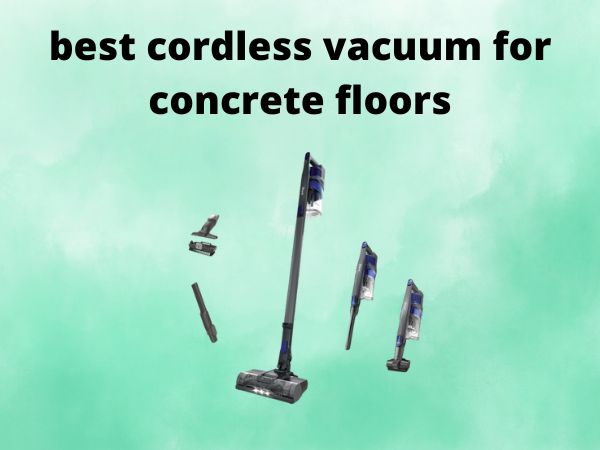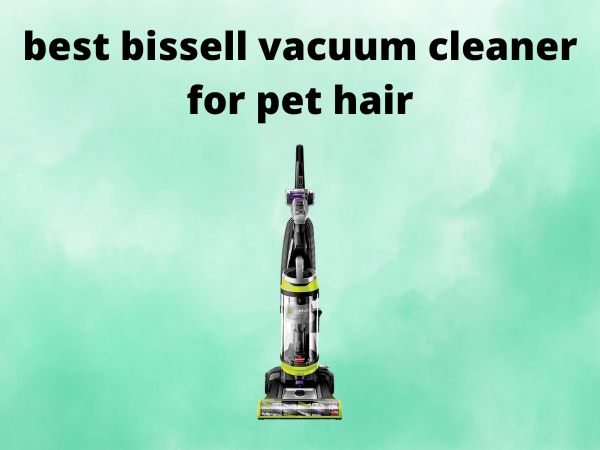How to Manually Vacuum a Swimming Pool [A Complete Step-by-Step Guide]
Keeping your swimming pool crystal clear doesn’t have to break the bank or require expensive automatic systems. Manual pool vacuuming is a time-tested method that gives you complete control over your pool’s cleanliness while saving money on maintenance costs. Whether you’re a new pool owner or looking to master this essential skill, this comprehensive guide will walk you through everything you need to know about manually vacuuming your swimming pool.
Table of Contents
Why Manual Pool Vacuuming is Essential for Pool Maintenance
Think of manual pool vacuuming as giving your pool a thorough deep clean – something that surface skimming and chemical treatments alone simply can’t achieve. While your pool’s filtration system works around the clock, it can’t reach every nook and cranny where debris settles.
Manual vacuuming allows you to target specific problem areas, remove stubborn algae buildup, and ensure that fine particles that might cloud your water are completely eliminated. It’s like the difference between wiping down your kitchen counter and actually scrubbing it clean – both are necessary, but one goes much deeper.
Health Benefits of a Clean Pool
A properly vacuumed pool isn’t just about aesthetics – it’s about health and safety. When debris accumulates on your pool floor, it becomes a breeding ground for bacteria and algae. These microorganisms can cause skin irritation, eye infections, and respiratory issues for swimmers.
By regularly vacuuming your pool, you’re removing the organic matter that feeds these harmful microorganisms. This means you’ll use fewer chemicals to maintain proper sanitization levels, creating a more comfortable swimming environment for everyone.
Cost-Effective Pool Care
Manual vacuuming is incredibly cost-effective compared to automatic pool cleaners that can cost hundreds or even thousands of dollars. With just a basic vacuum setup costing under $100, you can achieve professional-level cleaning results while getting some exercise in the process.
Plus, when you vacuum manually, you’re intimately familiar with your pool’s condition. You’ll spot potential problems like loose tiles, equipment issues, or water chemistry imbalances before they become expensive repairs.
Essential Equipment You’ll Need for Manual Pool Vacuuming
Before you can start vacuuming, you’ll need to gather the right tools. The good news is that manual pool vacuuming equipment is relatively simple and affordable. Here’s what you’ll need to get started.
Vacuum Head Types and Selection
The vacuum head is the business end of your cleaning operation, and choosing the right one makes all the difference. There are three main types to consider:
Weighted vacuum heads are perfect for concrete and gunite pools. The added weight helps maintain contact with textured surfaces, ensuring thorough cleaning. These heads typically feature sturdy brushes that can scrub away stubborn algae and debris.
Brush vacuum heads work well for all pool types but are especially effective on vinyl and fiberglass surfaces. The brushes help agitate debris while the suction removes it, giving you a two-in-one cleaning action.
Wheeled vacuum heads are ideal for delicate surfaces like vinyl liners. The wheels prevent the head from getting stuck in corners and reduce the risk of tearing or scratching your pool’s surface.
Pool Hoses and Connections
Your vacuum hose is the lifeline between your vacuum head and the pool’s suction system. Most residential pools require a 30-40 foot hose, but measure your pool’s longest dimension and add 10 feet to ensure adequate reach.
Look for hoses with swivel connections to prevent tangling, and make sure the diameter matches your skimmer and vacuum head connections. A quality hose will last for years with proper care, while a cheap one might leave you frustrated with constant kinks and poor suction.
Telescopic Poles and Accessories
A good telescopic pole extends your reach and reduces back strain during vacuuming. Most poles extend from 8 to 16 feet, giving you the flexibility to clean both shallow and deep areas comfortably.
Some poles feature ergonomic grips and lightweight aluminum construction that makes extended cleaning sessions less tiring. Don’t forget to have spare hose clamps and vacuum head attachments on hand – these small parts have a habit of disappearing when you need them most.
Preparing Your Pool for Manual Vacuuming
Proper preparation is half the battle when it comes to effective pool vacuuming. Rushing into the process without preparing your pool properly is like trying to vacuum your house without picking up the toys first – you’ll just be pushing problems around instead of solving them.
Testing and Balancing Water Chemistry
Before you even touch your vacuum equipment, test your pool’s water chemistry. Proper pH levels (7.2-7.6) and adequate chlorine levels (1.0-3.0 ppm) ensure that any debris you stir up during vacuuming won’t cause water quality issues.
If your pH is too high, the vacuum process might cause calcium precipitation, making your water cloudy. If chlorine levels are too low, disturbing settled debris could lead to bacterial growth. Take a few minutes to balance your water chemistry, and you’ll save yourself hours of frustration later.
Skimming Surface Debris
Think of surface skimming as the appetizer before the main course. Remove leaves, insects, and floating debris before you start vacuuming. This prevents these items from sinking to the bottom during the vacuuming process, where they’ll interfere with your work.
Pay special attention to corners and behind ladders where debris tends to collect. A thorough skimming session should leave your water surface completely clear, giving you an unobstructed view of the pool bottom.
Brushing Pool Walls and Steps
Brushing might seem like extra work, but it’s actually a time-saver in the long run. Algae and biofilm that cling to pool walls will eventually fall to the bottom, where they’ll clog your vacuum or cloud your water.
Use firm, overlapping strokes to brush all surfaces, working from top to bottom. Pay extra attention to areas with poor circulation, like behind ladders, in corners, and around steps. Let the loosened debris settle for at least 30 minutes before you start vacuuming.
Step-by-Step Manual Pool Vacuuming Process
Now comes the main event – the actual vacuuming process. Take your time with each step, and you’ll achieve professional results that would make any pool service technician proud.
Setting Up Your Vacuum Equipment
Start by connecting your vacuum head to the telescopic pole, ensuring all connections are tight and secure. Attach one end of your vacuum hose to the vacuum head, making sure the connection is firm – a loose connection here will result in poor suction throughout the entire process.
Submerge the vacuum head and about three feet of hose into the pool, keeping the other end of the hose above water. This partial submersion allows you to prime the system properly without fighting air bubbles from the start.
Priming the Vacuum Hose
Priming your vacuum hose is crucial for maintaining strong suction throughout the cleaning process. Hold the free end of the hose over a return jet, allowing water to flow through the entire length of the hose until water flows steadily from the vacuum head end.
You’ll know the hose is properly primed when you see a steady stream of water flowing from the vacuum head with no air bubbles. This process removes all air from the system, ensuring maximum suction power when you connect to the skimmer.
Connecting to the Skimmer or Dedicated Suction Port
With your hose fully primed, quickly move the free end from the return jet to your skimmer suction port or dedicated vacuum line. Speed is important here – the longer you take, the more air will enter the system, reducing suction efficiency.
If using the skimmer, remove the skimmer basket first and insert the hose end directly into the suction port. Some pools have dedicated vacuum ports that provide stronger suction – use these when available for more efficient cleaning.
Vacuuming Techniques and Patterns
Effective vacuuming is all about technique and patience. Random, hurried movements will just stir up debris without removing it, while slow, methodical patterns ensure thorough cleaning with minimal water cloudiness.
Starting from the Deep End
Always begin vacuuming at the deep end of your pool and work toward the shallow end. This technique uses gravity to your advantage – debris that gets stirred up will settle in areas you haven’t cleaned yet rather than contaminating areas you’ve already finished.
Move the vacuum head slowly across the pool bottom, no faster than you would mow your lawn. Quick movements create turbulence that lifts debris into the water column instead of allowing the vacuum to capture it.
Overlapping Strokes Method
Use overlapping strokes to ensure complete coverage, similar to how you’d vacuum a carpet. Each pass should overlap the previous one by about 50%, preventing you from missing spots and ensuring even cleaning throughout the pool.
Work in straight lines when possible, as this pattern is most efficient and easiest to track. In irregularly shaped pools, break the area into sections and clean each section systematically before moving on to the next.
Common Mistakes to Avoid When Manually Vacuuming
Even experienced pool owners can fall into bad habits that make vacuuming less effective. Avoiding these common mistakes will save you time and deliver better results every time you clean your pool.
Moving Too Fast
The biggest mistake novice pool cleaners make is rushing through the vacuuming process. Moving the vacuum head too quickly creates turbulence that lifts debris away from the suction intake instead of capturing it.
Think of it like trying to drink a thick milkshake through a straw – if you suck too hard too fast, you’ll just create bubbles and frustration. Slow, steady movements allow the vacuum to work efficiently, removing more debris with each pass.
Ignoring Pool Chemistry
Vacuuming with improper water chemistry is like washing dishes in dirty water – you might move the dirt around, but you won’t get things truly clean. Always test and adjust your water chemistry before vacuuming, especially if it’s been several days since your last treatment.
Poor water chemistry can also damage your equipment over time. Highly acidic water can corrode metal components, while basic water can cause scale buildup that reduces efficiency and shortens equipment life.
Troubleshooting Manual Pool Vacuum Issues
Even with proper technique, you might encounter problems during the vacuuming process. Here’s how to diagnose and fix the most common issues you’ll face.
Loss of Suction Problems
If you notice decreased suction during vacuuming, the most likely culprit is air entering the system somewhere. Check all connections between the vacuum head, hose, and skimmer to ensure they’re tight and secure.
Cracks in the vacuum hose can also cause suction loss. Inspect the entire length of your hose for splits, holes, or loose connections. A temporary fix for small holes is pool putty or waterproof tape, but plan to replace damaged hoses for best performance.
Debris Not Being Picked Up
When debris isn’t being picked up effectively, it’s often because the vacuum head isn’t making proper contact with the pool surface. This is especially common on textured concrete surfaces where the vacuum head might ride high on the texture.
Weighted vacuum heads solve this problem by using gravity to maintain surface contact. If you’re using a standard head, try applying gentle downward pressure or moving even more slowly to give the suction time to work.
Maintenance Tips for Your Manual Pool Vacuum
Taking care of your vacuum equipment ensures it will serve you well for years to come. Proper maintenance also prevents equipment failures during cleaning sessions, saving you time and frustration.
Cleaning and Storage
After each use, rinse all equipment thoroughly with fresh water to remove chlorine and other pool chemicals that can cause deterioration over time. Pay special attention to the vacuum head, where debris and chemicals tend to accumulate.
Store your equipment in a cool, dry place away from direct sunlight. UV rays can degrade plastic and rubber components, while temperature extremes can cause cracking and brittleness. Coil hoses loosely to prevent permanent kinks that reduce water flow.
Regular Equipment Inspection
Inspect your vacuum equipment regularly for signs of wear or damage. Check hose connections for cracks, examine the vacuum head for bent or damaged brushes, and ensure telescopic poles extend and lock properly.
Replace worn components promptly – a $10 hose repair can prevent the need for a $100 hose replacement down the road. Keep spare parts like hose clamps and vacuum head attachments on hand for quick repairs.
When to Consider Alternative Cleaning Methods
While manual vacuuming is effective and economical, there are situations where other cleaning methods might be more appropriate. Understanding when to use alternatives can save you time and effort.
If your pool requires vacuuming more than twice per week, an automatic cleaner might be a worthwhile investment. Similarly, if physical limitations make manual vacuuming difficult, robotic or suction-side cleaners can maintain your pool with minimal intervention.
For severely contaminated pools or those with persistent algae problems, professional cleaning services might be necessary to restore water quality before returning to regular manual maintenance.
Frequently Asked Questions
Q: How often should I manually vacuum my swimming pool? A: Most pools benefit from manual vacuuming once or twice per week during swimming season. However, factors like pool usage, surrounding vegetation, and weather conditions may require more frequent cleaning. Pools with heavy bather loads or lots of nearby trees might need vacuuming every few days.
Q: Can I vacuum my pool if the water is cloudy or green? A: It’s best to address water chemistry issues before vacuuming cloudy or green water. Vacuuming algae-contaminated water can clog your filter system and spread algae throughout the pool. Shock treat the water, brush surfaces thoroughly, and wait for the water to clear before vacuuming the settled debris.
Q: What’s the difference between vacuuming to waste and through the filter? A: Vacuuming through the filter recycles the water back to the pool after filtration, conserving water but potentially clogging your filter with heavy debris. Vacuuming to waste sends debris-laden water directly to the drain, requiring you to add fresh water but preventing filter clogging when dealing with large amounts of debris.
Q: Why does my pool get cloudy after I vacuum it? A: Cloudiness after vacuuming usually indicates that you’re moving too fast, stirring up fine particles that your filter can’t immediately capture. It can also occur if your filter needs cleaning or if your water chemistry is imbalanced. Slow down your vacuuming technique and ensure your filter system is working properly.
Q: How long should it take to manually vacuum an average-sized pool? A: A typical residential pool (15×30 feet) should take 30-45 minutes to vacuum thoroughly using proper technique. Larger pools or those with heavy debris loads will take longer. Remember, it’s better to take your time and do it right than to rush and miss spots or create water quality problems.
Conclusion
Manual pool vacuuming is a valuable skill that every pool owner should master. With the right equipment, proper technique, and regular maintenance, you can keep your pool sparkling clean while saving money on professional services and expensive automatic cleaners.
Remember that consistency is key – regular vacuuming prevents small problems from becoming big headaches. Start with the basics covered in this guide, and you’ll soon develop the rhythm and technique that makes manual vacuuming an efficient part of your pool maintenance routine.
The investment in time and effort pays dividends in crystal-clear water, reduced chemical usage, and the satisfaction of maintaining your pool yourself. With practice, you’ll find that manual vacuuming becomes second nature, giving you complete control over your pool’s cleanliness and condition.




